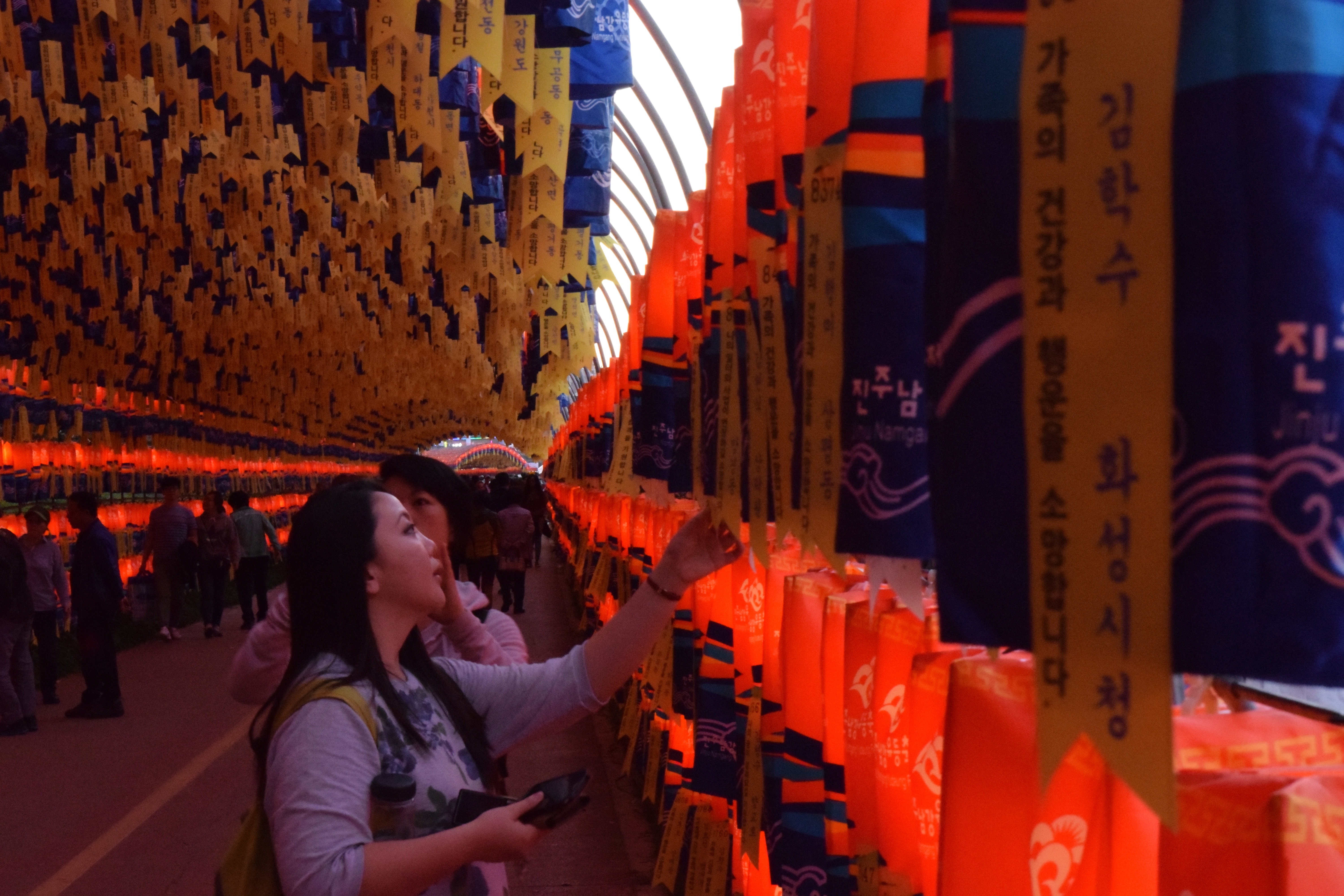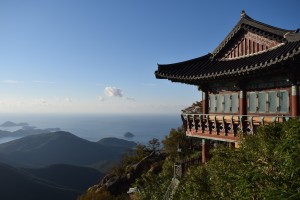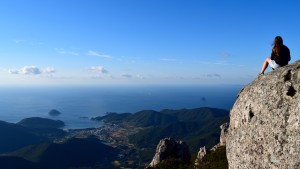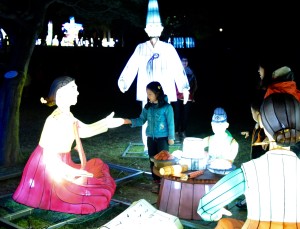A Weekend In Jinju and Namhae

In the west, the sky is a brilliant orange fading to blue above. The sun has just slipped below the peaks of the low mountains of this southern Korean town. The color reflects in the ripples of the slow-moving river.
Along the river, figurines of all shapes and sizes dot the water’s surface. As the blue sky above deepens with the fast-approaching night, the power goes on for the lights inside the lanterns, and the river takes on its own glow.
Jinju’s Bloody History

In an attempt to expand his power, he led his armies west to conquer China, but Korea stood in the way. His dreams would die on the Korean peninsula.
On the southern coast of Korea, the Jinjuseong fortress (defending the city of the same name, Jinju) had grown and strengthened since the time of the Three Kingdoms which ended in the 7th century.
The wall would show its finest hour in 1592 when 20,000 Japanese soldiers stormed the city of Jinju. In a feat of solidarity and heroism, the greatly outnumbered people of Jinju repelled the invasion.
The resistance in the rest of the peninsula would be less effective, and the Koreans would lose control of the majority of their former lands until a combination of naval supremacy and Chinese support would finally repel the Japanese invasion in 1598.
Lanterns
During the battle of the Jinjuseong Fortress, the people lit lanterns along the Namgang (South River) that runs along the fortress wall both for communication and to deter the Japanese from attempting to wade across.
The next year, the castle fell to overwhelming numbers, and over 70,000 Koreans lost their lives. Today Koreans commemorate their sacrifice by lighting wish lanterns and building elaborate floating lanterns all along the river in front of the fortress.
For just over a week in early October, the river and fortress come alive with the glow of beautiful lanterns depicting pop culture icons, world monuments, and historical and religious symbols.
Inside the fortress, the battle is recreated in lantern form, complete with Korean guards along the fortress walls and Japanese soldiers unsuccessfully scaling ladders. The festival attracts thousands of tourists and locals. Local merchants sell artisanal crafts, and the riverwalk is lined with a variety of Korean, Asian, and Western food tents.
A long row of lanterns represent 35,000 wishes in an impressive tunnel behind the vendors. To hang your own lantern here, you must apply in advance before the end of August.
You can make a wish lantern and float it down the river after dusk each day during the festival for 3,000 won. Twice during the festival (this year on the opening night and the second Friday) there is a fireworks display over the river.
Other Attractions
The lantern festival is certainly Jinju’s biggest claim to fame these days, but there are plenty of other attractions in the area. Not far from the fortress, a traditional market that snakes along the backstreets provides an intimate view into the everyday lives of Koreans.
My experience in Jinju was quite short though, and we left right after the fireworks to drive down to Namhae Island.
Namhae Island

You can visit many traditional cultural locations like the Daraengi village and Haeoreum Art village, but those looking for a more exotic experience will find a curious clash of cultures at the German Village.
In an attempt to welcome home the Koreans (and their new families) who had gone to Germany to live and work while sending back large amounts of their foreign pay, this classically German neighborhood hosts a Korean-style Oktoberfest each year.
The main festivities at Oktoberfest take place at a replica village square on the highest peak of the village. [bctt tweet=”The two-day festival features live music, performances, sausage, and of course, lots of beer.”] Though the selection of beer is a bit limited, it is imported and complements the festivities well. (Whatever you do, don’t drink the garlic beer. It’s terrible.)
What you must do though, is wander down the hill to meet with some of the locals who have stayed in the area. Though most families leave for the tourist-filled weekend, a few remain and engage their guests.
A couple hundred meters down the road from the main square, on an unassuming side street, we spotted a German man and his Korean wife grilling sausages in front of their home. For 5,000 won, we got a sausage in a hard roll with spicy mustard that was infinitely better than any of the food elsewhere in the village.
The festivities continued on late into the evening. The music transitioned from mediocre Korean cover bands, to strange German folk groups, to Latin-style drum troupes, to a house DJ, to a K-pop boy band. I left at nine, but the party went on much later.
The best part of the trip was the next morning when we hiked to the Geumsan Boriam Temple. Geumsan is the tallest peak on Namhae, and from that vantage, you can clearly see the mountainous geography as you overlook the lower peaks protruding from the distant waters.
The mountain is in the southeastern part of the island, and the temple can be reached by car. However, I suggest making the two-kilometer climb for yourself. We made the journey at sunrise, and the view was breathtaking.
The lantern festival and Oktoberfest were fun experiences, and I’m glad I joined the weekend trip. That said, I would have made the entire five-hour drive from Seoul to Namhae just for a few minutes at the summit of Geumsan.


